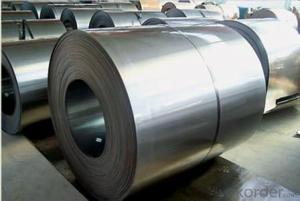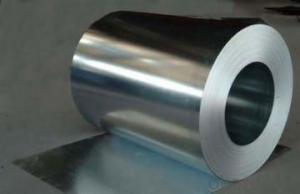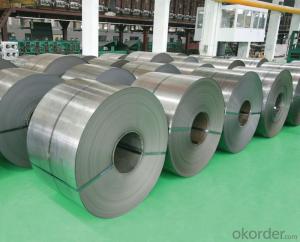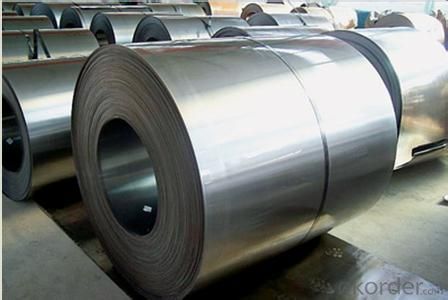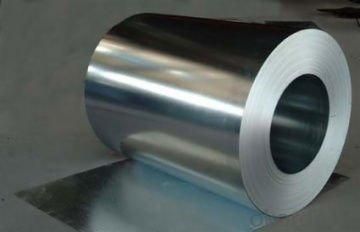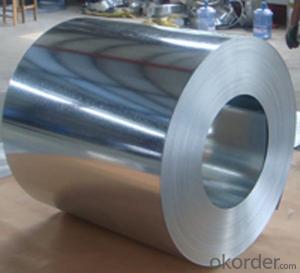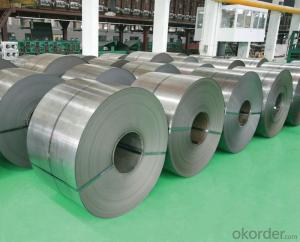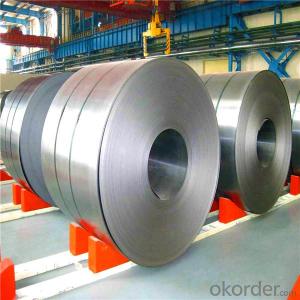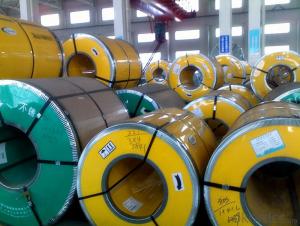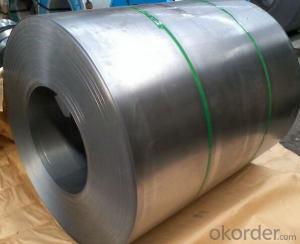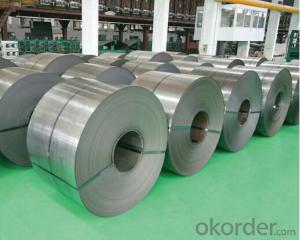Cold Rolled Steel Coil with Prime Quality
- Loading Port:
- Shanghai
- Payment Terms:
- TT OR LC
- Min Order Qty:
- 100 m.t.
- Supply Capability:
- 10000 m.t./month
OKorder Service Pledge
OKorder Financial Service
You Might Also Like
1.Structure of Cold Rolled Steel Description:
The raw material of cold rolled steel coil/sheet is high quality hot rolled product, and after pickling continuous rolling, degreasing, annealing,skin pass,slitting and cut to length line etc. Along with it many kinds of new technology and new process of global cold rolling production have been applied. Therefore the quality of the goods could be guaranteed. 2.Main Features of the Cold Rolled Steel:
• Excellent process capability
• High strength
• Good formability
• Good visual effect
• Smooth and flat surface
• Workability, durability
• Excellent heat resistance performance
3.Cold Rolled Steel Images
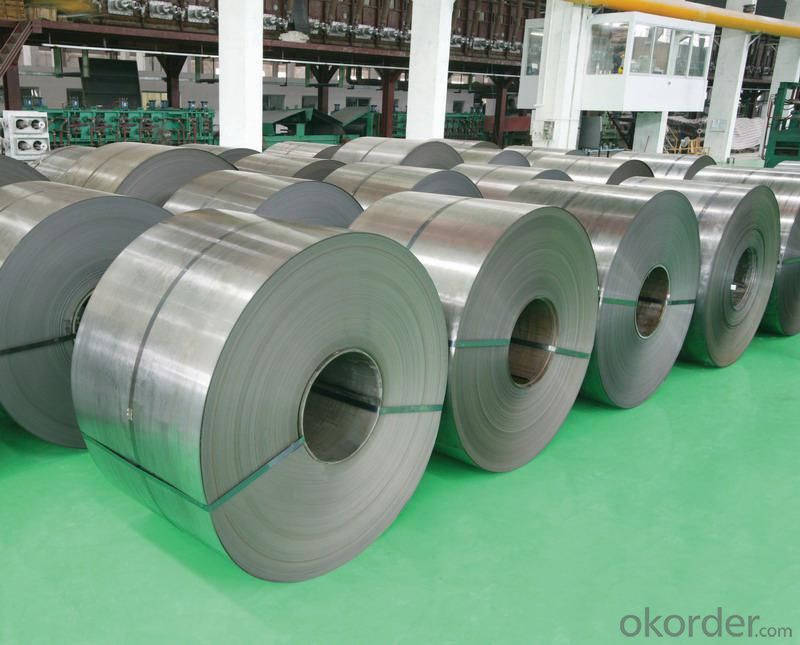
4.Cold Rolled Steel Specification
Standard:AISI,ASTM,DIN,GB,JIS,JIS G3302 ASTM 653M EN10142
Width: 1250,600-1250mm
Coil weight:3-12 MT
Coil ID:508/610mm
Grade: Q195~Q345
Thickness: 0.16mm~1.5mm,0.16-1.5mm
Chemical composition:
C | Si | Mn | Cr | Ni | P | S |
0.150 | 0.476 | 11.231 | 12.50 | 0.900 | 0.039 | 0.010
|
5.FAQ of Cold Rolled Steel
We have organized several common questions for our clients,may help you sincerely:
1.How about your company?
A world class manufacturer & supplier of castings forging in carbon steel and alloy steel,is one of the large-scale professional investment casting production bases in China,consisting of both casting foundry forging and machining factory. Annually more than 8000 tons Precision casting and forging parts are exported to markets in Europe,America and Japan. OEM casting and forging service available according to customer’s requirements.
2.How to guarantee the quality of the products?
We have established the international advanced quality management system,every link from raw material to final product we have strict quality test;We resolutely put an end to unqualified products flowing into the market. At the same time, we will provide necessary follow-up service assurance.
- Q: How are steel coils loaded onto a truck?
- Loading steel coils onto a truck is typically accomplished by combining machinery and manual labor. To ensure safe and efficient loading, several steps are involved. To begin, the truck must be adequately prepared. This entails cleaning the truck's bed and removing any debris or obstacles that could hinder the loading process. Additionally, protective materials like rubber mats may be placed on the truck's bed to safeguard both the coils and the truck. Next, a forklift or crane is utilized to lift and position the steel coils onto the truck. The operator must handle the coils with care, ensuring they are balanced and securely fastened to prevent movement during transportation. Adhering to proper lifting techniques and safety protocols is critical to avoid accidents or coil damage. After the coils are positioned on the truck, various methods can be employed to secure them. This may involve using straps, chains, or other restraints to hold the coils in place and prevent shifting or falling while in transit. The restraints must be appropriately tightened and inspected to withstand the weight and movement of the coils. It is worth noting that the loading process may vary based on the size and weight of the steel coils, as well as the available equipment. Some trucks may feature specialized loading systems specifically designed for steel coils, streamlining the process and enhancing safety. In summary, loading steel coils onto a truck necessitates meticulous planning, skilled operators, and suitable equipment. Adhering to proper procedures and safety measures is vital to ensure successful coil transportation and prevent accidents or damage.
- Q: What is the purpose of steel coils?
- The purpose of steel coils is to efficiently store and transport large quantities of steel in a compact and secure manner.
- Q: i was thinking like getting a a steel building for 2 or 3 stall does anyone know how much that would cost? Have anyone used steel building how do you like them etc
- a great style of human beings are putting up those steel homes made by making use of agencies like Cleary or Morton because of the fact they are greater fee effective. yet in my opinion, i don't think of they greater wholesome horses all right. They dent very relatively, all the horse has to do is lean against it somewhat. additionally they provide no insulation so as that they are like little ovens interior the summertime and are fairly chilly interior the wintry climate. in case you're able to have adequate money it, i might flow with a competent previous formed timber barn.
- Q: I want to make an object out of stainless steel. Initially, I had planned to get it cut out of stainless steel sheet but several of the edges need to be rounded and I think it would be much cheaper to get it made of cast iron formed in a mold.Yet, it must be stainless steel. Can stainless steel be formed in a mold like iron can ... i.e. poured in liquid form into a mold and harden into shiny stainless steel?Would a regular foundry do this or do I need something special?Thanks.
- You have 2 options. Sand casting or investment casting. Stainless steel can be cast with either of these methods. In either case a model or pattern will have to be created. For sand casting the pattern is all that is needed to go to casting. For investment casting the pattern is used to make a wax casting, which is then coated with the investment. The wax is burned out and the metal is then poured into the cavity. If you are making just 1 or 2 pieces you can have waxes machined. This saves the intermediate step Depending on the size machining may still be your best option. Especially if you want just 1 part.
- Q: Can someone help me...i have a diagram and were supposed to calculate the steel tonnage needed for the pictre. Can someone tell me step by step what i need to do (ex:find area of ...)
- - Find the cross sectional area of the steel bars if given, if not find the volume of concrete and approximately multiply the concrete volume by 400kg the weight of steel per concrete volume. - If you find the steel cross sectional area , multiply by the
- Q: What are the common coil thickness and width combinations available for steel coils?
- The specific requirements and standards of the industry can cause the available combinations for steel coil thickness and width to vary. Nonetheless, there are commonly used combinations that can be found. There is a range of options for coil thickness, varying from thin to thick coils. Thin coils typically have a thickness of 0.4mm to 3.0mm, while medium thickness coils can be around 3.0mm to 6.0mm. Thicker coils can range from 6.0mm to 25.0mm or even higher, depending on the specific application. The coil width also varies depending on the intended usage. Common options include widths of 600mm, 750mm, 900mm, 1000mm, 1200mm, 1250mm, and 1500mm. However, wider or narrower coils can also be available depending on the specific requirements of the customer or industry. Ultimately, the most suitable combination of coil thickness and width will depend on factors such as the intended application, manufacturing processes, transportation limitations, and customer preferences. It is crucial to consult with steel coil manufacturers or suppliers to determine the most appropriate options for your specific needs.
- Q: How are steel coils used in the production of bridges?
- Steel coils are used in the production of bridges as they provide a reliable and strong structural material. These coils are shaped and formed into various components, such as beams and girders, which are then assembled to create the bridge's framework. The steel coils' durability and high tensile strength make them ideal for supporting heavy loads and withstanding the forces experienced by bridges.
- Q: What are the common methods of inspecting steel coils for defects?
- The common methods of inspecting steel coils for defects include visual inspection, ultrasonic testing, magnetic particle inspection, and eddy current testing.
- Q: Are steel coils affected by temperature changes?
- Yes, steel coils can be affected by temperature changes. Steel is a metal that expands when heated and contracts when cooled. This expansion and contraction can lead to changes in the dimensions and shape of steel coils. Additionally, extreme temperature variations can cause thermal stress, which may result in warping, cracking, or weakening of the steel coils. Therefore, temperature changes can have an impact on the performance and integrity of steel coils.
- Q: Explain why a steel nail sinks but a steel ship floats.
- A steel nail is much denser than the water. That means that it weighs more than an equivalent volume of water. Therefore, the buoyancy is never going to be enough to hold it up. Whether it is a big steel nail or a small one, it will always be too dense for the water to support it. Because of its shape, a steel ship is not as dense as water. It is not made out of a solid block of steel. Instead, the hull is built of thin plates of steel enclosing an open space. A steel ship is sort of like an empty cup. Although its sides are hard and dense, it holds a lot of air in the middle. Since air weighs almost nothing, it lowers the overall density of the ship to a point where its buoyancy exceeds its weight, and the ship floats. Think of it as you trying to sink a balloon.
Send your message to us
Cold Rolled Steel Coil with Prime Quality
- Loading Port:
- Shanghai
- Payment Terms:
- TT OR LC
- Min Order Qty:
- 100 m.t.
- Supply Capability:
- 10000 m.t./month
OKorder Service Pledge
OKorder Financial Service
Similar products
Hot products
Hot Searches
Related keywords
